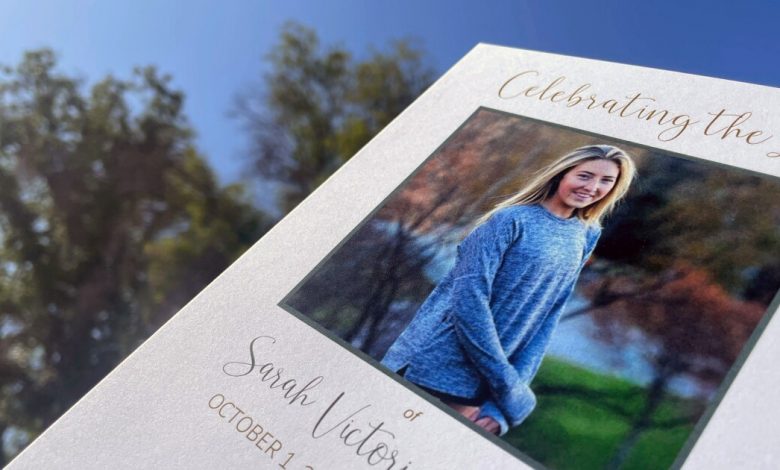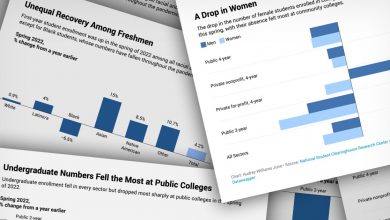Why Women in College Sports Are Struggling With Mental Health

If you are in crisis and would like to talk to someone, you can call the National Suicide Prevention Lifeline, at 1-800-273-TALK (8255), or text “HOME” to the Crisis Text Line, at 741741. Both services are free, confidential, and available 24/7.
Many college students are experiencing mental-health crises, but one subset has seen a rash of reported suicides this year: female athletes.
On Thursday, Southern University and A&M College announced a cheerleader, Arlana Miller, had died shortly after writing a social-media post that detailed her mental-health struggles, NBC News reported. That news followed the deaths by suicide of three women this spring: Lauren Bernett, a James Madison University softball player; Sarah Shulze, a member of the University of Wisconsin at Madison track team; and Katie Meyer, a Stanford University soccer player.
Students are speaking out about the problem and asking for more help in dealing with the pressures they feel as athletes. Last month Cailin Bracken, a Vanderbilt University lacrosse player, wrote an open letter to the college-sports world after learning about the death of another player. She described her decision to take some time off from the sport to focus on her mental health, and urged members of this community to do a better job of supporting players who need help.
“When you are an adult in this space, you have a massive responsibility to — above all else — make sure that the young adults with whom you work feel safe, loved, and valued,” she wrote.
“Players, coaches, parents, fans, professors, administrators,” she went on, “if you cannot do your job while simultaneously offering grace to the young adults with whom you work, you are unfit for your position.”
This is not a new problem. But scholars who follow mental health and sports say it has been particularly acute in the past year.
The Chronicle spoke on Friday with two experts about why there is a crisis now and what colleges can do about it. The interviews were conducted separately with Ellen J. Staurowsky, a professor of sports media at Ithaca College, and Joy Gaston Gayles, senior adviser for advancing diversity, equity, and inclusion at North Carolina State University, who has published several articles about athletes and mental health. The following interviews have been edited for length and clarity, and have been combined for readability.
We’ve seen a number of high-profile cases of women athletes dying by suicide. Are they simply getting more attention, or have you noticed this happening more?
Staurowsky: There’s no question that athletes are experiencing high rates of depression, anxiety, and other forms of mental-health issues at levels that we’ve not seen before. There was a University of Michigan study a couple of years ago that was signaling that we had a group of athletes who really needed mental-health resources and support.
It isn’t a new issue, but there are some things — especially in this Covid era — that are different in this moment. The trauma of worrying about family resources. The switches to an all-Zoom environment. The wear and tear that occurred for everyone as they were going through that. The social isolation that so many of our athletes and our students are feeling. They really feel like they have to just soldier on and keep whatever’s going on with them to themselves.
I don’t think that higher-education institutions fully understand the nature of the crisis and how we need to rethink the services we provide.
In the past 10 years we’ve really been seeing the data tick up in ways that we haven’t seen before. Now we have this time period that is creating a greater burden for young people.
Gayles: It’s definitely a crisis. I think we’re seeing an increase. We’ve had three since March. That seems like a lot to me — a lot of suicides.
It’s a major concern, and I don’t think that higher-education institutions fully understand the nature of the crisis and how we need to rethink the services we provide so that we can get students the help that they need.
How does this crisis affect athletes in particular?
Staurowsky: There’s been a theme with these stories. People who were close to these young women, and to college athletes more generally, say that trying to balance the academics, athletics, and other things in their life — that those demands have just been escalating.
There was a study done by Anne S. Walters, published in September 2021. Of the group of college athletes that she looked at, 30 percent reported feeling seriously overwhelmed and 25 percent reported feeling mentally exhausted. Less than half felt that they had adequate assistance when they sought help. That’s part of what’s contributing to my sense that we’ve got something else going on here that’s well beyond maybe what we’ve seen before. She also took a look at how athletic trainers were talking about the needs in the training room. Less than half of those athletic trainers said they used mental-health screenings as part of their work.
College athletes are facing these stressors within the context of what many of their classmates are facing.
College athletes are facing these stressors within the context of what many of their classmates are facing. Their classmates are also mentally exhausted. In addition to that, we’ve got more traditional kinds of factors and identity issues around what happens if I stop playing? Who am I if I’m not a part of my team anymore? This question of, Can I even take a leave of absence from playing? Or can I tap out of my sport for a time? And what’s going to happen to my role on the team if I then try to come back?
Gayles: I have two children, teenagers now, and they’re both sports participants. I was a student-athlete, too, and I think about how my experience playing sports was different than theirs. Back in my day, you toughened it up and you had to not experience emotions. And I just think today’s generation, they don’t want to do that. And I don’t know that we should do it.
When I think about Simone Biles and Naomi Osaka, we shouldn’t be surprised that people are opting out or saying, Something is going on with me. I’m not going to do this. It should be normalized.
Even though they were applauded in some circles, the criticism was still there. Why do we do that?
This isn’t just an issue for women, but are there particular pressures that women athletes in college experience?
Staurowsky: We’re heading into the 50th anniversary of Title IX, and I think we’re still in a space where women athletes are being given mixed messages. On one hand, as a culture, slowly but surely we’re seeing women athletes for who they are in terms of their ability to be captivating and exciting. But at the same time, women navigate the societal expectations around femininity. Women athletes have historically had more than one job to do. It wasn’t enough to be good. You also had to be signaling that you were still OK as a woman.
As women athletes become more successful in a social-media age, the benefit is that they’re getting more exposure. But at the same time, they’re also being subjected to all of those commentaries and the forces around that. That can be incredibly wearing.
The other piece of this is, athletic departments are under pressure in terms of revenue. The constant messaging around generating more revenue and justifying athletic departments on the basis of audience and revenue, how that translates out into the culture that coaches and athletes are operating in — it must be very difficult to manage all of that.
That might create blind spots for coaches who might give lip service to mental health, but when it comes down to the demands of the program, the program wins out. An athlete doesn’t feel like they can go up against that or doesn’t fully realize that maybe help is there. I’m trying very hard not to blame anybody in this because there’s so many different things that may come into play.
Gayles: I do think there’s something about this overly masculine culture that’s not good for anybody, even the folks who are considered masculine. You tough it up, you grin and bear it, do your thing. And when your emotions come up, you push them back down because we need to win and dominate.
One of my doctoral students just did her dissertation research on mental-health programs at Power Five institutions, trying to learn about institutions that are already ahead of the game in terms of having mental-health programs for student athletes on campus.
What are some of the things that you have seen that work for colleges?
Gayles: Athletic departments can tap into what’s happening on the college campus and do a good job of cross-collaborating. There’s always room to learn from others. We have to figure out how to normalize health-seeking behavior.
Also, giving students permission to not get it right. Because there’s a lot of learning that can come from failing. But there’s so much shame and guilt in our culture. That’s especially true in the athletic culture.
Making mental-health programs and services visible in these places is important as a way to reduce the stigma. We have to better train coaches and athletic-department staff about how to take care of an athlete. They make sure athletes are eligible and meet all the goals. But athletes need to know they’re valued and they’re cared about and that somebody is looking out for them.
Most campuses do have mental-health services, though probably not nearly enough to serve all of the mental-health needs on their campuses. But it seems as if part of the problem is a sense that those services cannot be trusted and relied on. How can colleges fix that?
Staurowsky: What I’ve been hearing is that these resources are overtaxed and that even when significant strides are made, the demand is just so much higher.
In terms of athletes, they do have questions around whether or not what they share is actually going to be protected. We have heard stories along the lines of a misunderstanding about roles and/or more intentional confusion around sports psychologists’ roles. Those roles may be more designed to support team performance rather than providing mental-health support.
There needs to be very clear delineations. If one person’s working to get the athlete to be the best performer they can be, that’s a very different role and a different person than someone who may be meeting with an athlete in terms of their mental health.
We don’t have industrywide standards in terms of health and safety in general. There are NCAA rules about concussion protocols. But there’s no enforcement mechanism. Things can vary widely from one school to another, from one conference to another, from one division to another. It creates such an uneven response to athletes.
Source link






